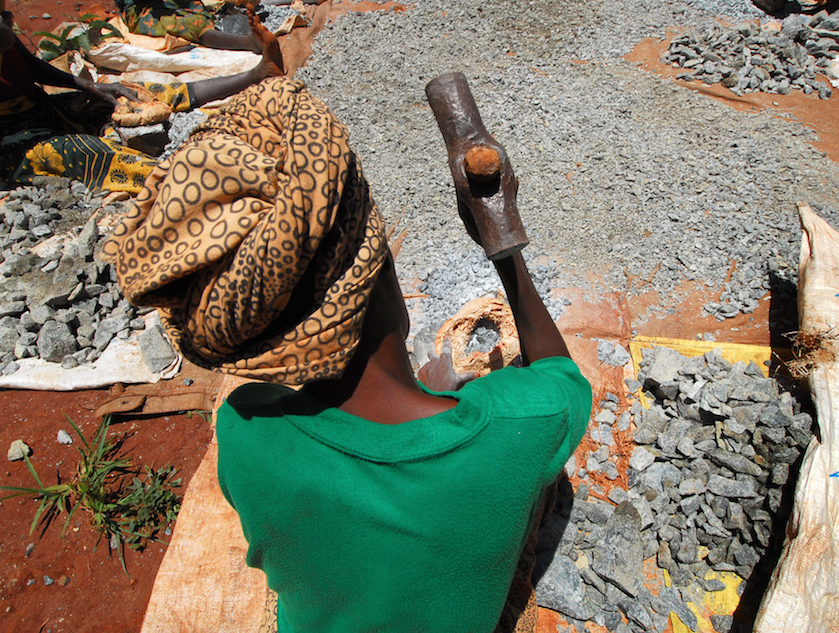
The report, with a mandate to improve working conditions within ASM, took on the challenge of bringing a structural analysis to a massive and unregulated, informal industry that employs millions at a subsistence level.
The report examines six key areas: Gender Equality, Socio-Economic Networks, Partnerships with ASM Associations, Health & Safety, National Statistics and Improved Wellbeing. It finds that better working conditions can improve productivity, health, and safety for artisanal miners across 80 countries.
The report outlines areas to improve occupational health and safety, social protection, and fair labor standards for the ASM sector for the at least 134 million people who are estimated to work in industries that support the sector.
The informality of the sector, an ongoing problem that affects around 90% of ASM activity, leaves artisanal workforces around the globe exposed to dangerous working conditions
Delve also found the informality of the sector, an ongoing problem that affects around 90% of ASM activity, leaves artisanal workforces around the globe exposed to dangerous working conditions.
From landslides to mercury exposure to intense manual rock crushing, miners enter the work site most days under-protected, the report finds.
The authors looked at actions to prioritize workers’ health and safety, and move away from the “fatalistic myth” that working conditions in the sector can’t improve.
For co-author James McQuilken, a key shift was recognizing how resilient ASM-dependant communities are and he said a goal was to show the audience global policy frameworks with aims to improve key areas of the sector.
“I think one of the biggest key findings is occupational health and safety — the data shows, from a really novel analysis trying to compare times and frequency rates — what we’re saying in there is that rates were similar in 1999 in ASM, and about the same as they were in the 70s and 80s in many of the larger built mines,” McQuilken told MINING.COM.
“The questions were, how did large-scale mining get to improve and how did it become unacceptable in society? In the US, it was coal miners not coming home after work because it was so dangerous,” McQuilken said.
The question became — why is it still acceptable for ASM?
For Nathan Schneck, a key was advancing a decent working agenda through the power of global networks and asking, how can the World Bank use its influence to encourage governments to update outdated laws that exclude women from mining data, and how can World Bank initiatives improve circumstances for women in developing nations?
“The questions were, how did large-scale mining get to improve and how did it become unacceptable in society? In the US, it was coal miners not coming home after work because it was so dangerous”
Co-author James McQuilken
“Delve itself is a data platform to showcase areas of global development with participation in the mining sector,” Schneck said.
The authors point to what happened with large-scale industry, in the US, for example, in the 1970s there was the establishment of the Mine Safety Health Administration (MSHA) with an annual budget of over $370 million.
There are economic reasons for improving safety for miners underground, the authors emphasized, and a case study within the report on the number of poles needed per metre of underground to support a tunnel, created cost savings — effectively replacing human chains with poles.
The authors also examined looked at a large-scale mine/ ASM cohabitation model to improve safety.
Gender-based data gap
One startling conclusion in the report was that 60% of the countries studied do not publish information that differentiates miners from male or female.
“We were looking at, while women make up a large percentage of the ASM workforce —they are largely invisible within the data,” Schneck said.
The report emphasizes the need for gender-differentiating data and proposes gender-based initiatives, such as installing separate changing facilities for women on sites — a privacy protection that enables more women to work on sites, and better training to prepare women for better paying roles.
“There is certainly a lot more work to be done to reform mining legislation in a way that is gender-sensitive and responsive. We have barely begun this task”
Rachel Perks, senior mining specialist, World Bank
“There is certainly a lot more work to be done to reform mining legislation in a way that is gender-sensitive and responsive,” said Rachel Perks, senior mining specialist, World Bank, in an emailed statement.
“We have barely begun this task when we consider the industrial mining sector, let alone with ASM.”
“However when it comes to visibility, our experience suggests it is less to do with legislation,” Perks said. “It has to do with how we perceive and value the work of artisanal and small-scale mining women.”
“They simply don’t get counted because they aren’t at the mine face: often working downstream in processing offsite. The 2020 State of the Sector report shines a light on the work of women in ASM.”
Perks also noted a key stumbling block to poor occupational health and safety and decent work performance in ASM is implementation.
“There are many good points of legislation and policies out there to guide formalization but it really is more about solutions being tried, tested and shared,” she said.
“We see more focus needed on changing practices at mine sites through the implementation of reforms, something which should be everyone’s collective responsibility.”




